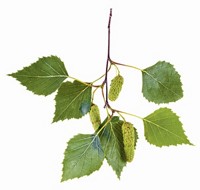Advertisement
Grab your lab coat. Let's get started
Welcome!
Welcome!
Create an account below to get 6 C&EN articles per month, receive newsletters and more - all free.
It seems this is your first time logging in online. Please enter the following information to continue.
As an ACS member you automatically get access to this site. All we need is few more details to create your reading experience.
Not you? Sign in with a different account.
Not you? Sign in with a different account.
ERROR 1
ERROR 1
ERROR 2
ERROR 2
ERROR 2
ERROR 2
ERROR 2
Password and Confirm password must match.
If you have an ACS member number, please enter it here so we can link this account to your membership. (optional)
ERROR 2
ACS values your privacy. By submitting your information, you are gaining access to C&EN and subscribing to our weekly newsletter. We use the information you provide to make your reading experience better, and we will never sell your data to third party members.
Biochemistry
How fallen leaves create slick train tracks
Leaf tannins or other polyphenols may react with iron, causing slippery tracks and delays
by Carolyn Wilke, special to C&EN
August 4, 2020

Autumn leaves put on a flashy, show of rusty reds, oranges, and browns. But when these leaves land on train tracks, they can cause a nuisance for commuters and rail agencies. When crushed by trains, fallen leaves can leave behind a slick black film that causes delays and disruptions. Now researchers are digging into the chemistry at work (Proc. R. Soc. A 2020 DOI: 10.1098/rspa.2020.0057).
Rail agencies in areas including the northeastern US and the UK might not know what the substance is, but they know it’s a problem. The mystery compound acts as a lubricant, reducing friction on the tracks, causing trains to slide, says Michael Watson, a tribologist at the University of Sheffield. To compensate, rail agencies delay trains and space them farther apart. If they can figure out which leaf compounds cause the problem, chemists might be able to come up with a preventive treatment that could be applied to the tracks in the fall, but answers have been elusive.
Previous studies have sampled substances from the rails, generating many hypotheses but few answers. Fallen leaves contain a myriad of compounds, and researchers found nearly every suspect chemical—sugars, ions, pectin—they looked for, but hadn’t proved any as responsible for causing slippery rails.
Watson and his team took a different tack by testing these hypotheses, eventually landing on leaf tannins. They prepared an extract from fallen sycamore leaves and reacted it with dissolved iron, to simulate a reaction that might occur on the rails. That reaction produced a shiny black precipitate similar to what’s seen on slippery train tracks in the fall. In friction tests, this precipitate behaved similarly, causing steel disks to slide in the lab. Pairing x-ray photoelectron spectroscopy with elemental analysis, the team worked out a rough formula for the precipitate. Their analysis revealed aromatic rings and hydroxyl groups, suggesting the involvement of polyphenols that may include tannins, a group of large biomolecules that plants produce. Based on their analysis, the scientists suggest that the slippery film is iron tannate, formed when the leaves’ tannins complex iron from the tracks.
It’s an “interesting insight,” says Ann E. Hagerman, a biochemist at Miami University, who was not involved with the work. But she says these tests don’t definitively pin the blame on tannins. Other polyphenols besides tannins could also be the culprits. The method the team used to extract tannins would also pull other plant phenolics, she says. And, she adds, their analysis provides little information on what type of tannin they could be dealing with. Watson says his team has already started doing further chemical analysis that can provide this information.
And they are experimenting with ways to keep the train wheels spinning by possibly applying a chemical to the tracks that can chelate the iron more strongly than the compounds in the leaves. Meanwhile, he warns, “the trains won’t be on time this autumn.”





Join the conversation
Contact the reporter
Submit a Letter to the Editor for publication
Engage with us on Twitter